| C. elegans
develops from a single cell, the
fertilized egg, to a 558-celled worm in
about 14 hours. The worm that
crawls out of its eggshell has a
functioning feeding apparatus, gut,
nervous system and muscles. These
videos show some of the events that
occur along the way. |
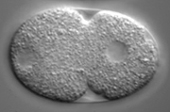
Normal
Development
from
us
|

Cytoplasmic
Flow
from
us
|
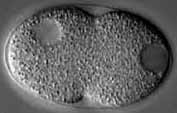
First Cell
Cycle
from
Tony
Hyman's lab
|
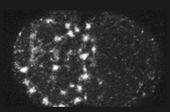
Myosin,
PARs, Microtubules
from the Center for Cell
Dynamics
|
from Cheeks et al
2004
|
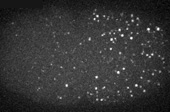
P granules
from
Brangwynne
et al 2009
|
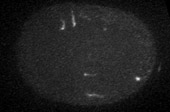
Actin Comets
from
Velarde
et al 2007 |
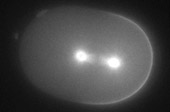
PARs, MEXs,
PIE-1, Microtubules
from
Cuenca
et
al 2003
|
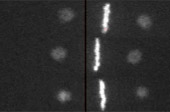
Timing
Spindle Displacement
from
McCarthy
Campbell
et al 2009
|
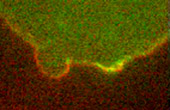
Blebs
from
Roh-Johnson
and Goldstein 2009
|

Chromosomes,
Microtubules
from
Desai
et
al 2003
|
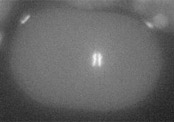
Chromosomes,
Microtubules
from
Oegema
et
al 2001
|

Histones,
Microtubules, gamma-Tubulin
from
Hannak
et
al 2001
|
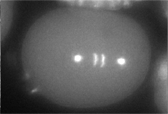
Histones,
Microtubules, gamma-Tubulin
from
Hannak
et
al 2002
|
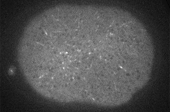
Microtubule
Tips
from
Labbé
et
al 2003
|
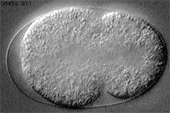
Cytokinesis
and Gastrulation
from
Severson
et
al 2002
|
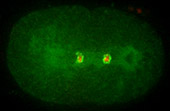
Nuclear
Envelopes, Fertilization, Plasma
Membranes
from
Jon
Audhya's lab
|
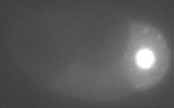
PIE-1
from
Reese
et
al 2000
|
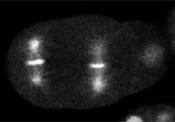
Spindles
Skewing
from Bergman
et
al 2003
|
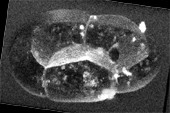
Membranes,
Cultured Cells, Microtubules
from Skop
et
al 2001
|
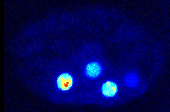
POP-1
from
Joel
Rothman's lab
|
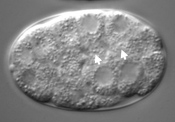
Gastrulation
from
us
|

Gastrulation
from
Nance
et
al 2003
|
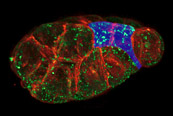
Actomyosin
and Membrane Dynamics
from
us
|
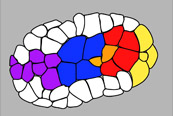
Later
Gastrulation
from
us
|
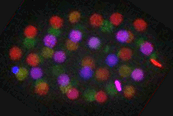
Histones and
Nuclear Envelopes
from
the Galy
lab
|
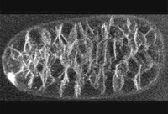
Membranes
from
Bill
Mohler's lab
|
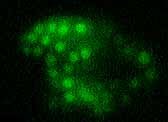
PES-1
from
Ian
Hope's
lab
|
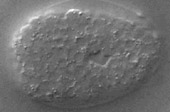
Ventral
Cleft Closure
from
Chisholm
and
Hardin
|
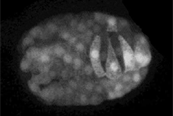
Dorsal
Intercalation
from
Jeff
Hardin's
lab
|
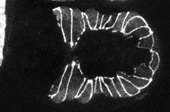
Epidermal
Morphogenesis
from Chisholm
and
Hardin
|
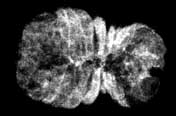
Ventral
Enclosure
from
Jeff
Hardin's lab
|

Junctional
Integrity in Epithelia
from
Jeff
Hardin's lab
|
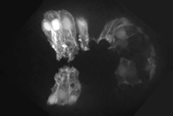
Ventral
Enclosure
from
Ronen
Zaidel-Bar's lab
|
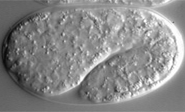
Embryonic
Elongation
from
Pettitt
et
al 2003
|
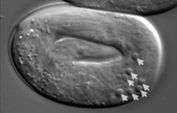
Cell Death
from
us
|

